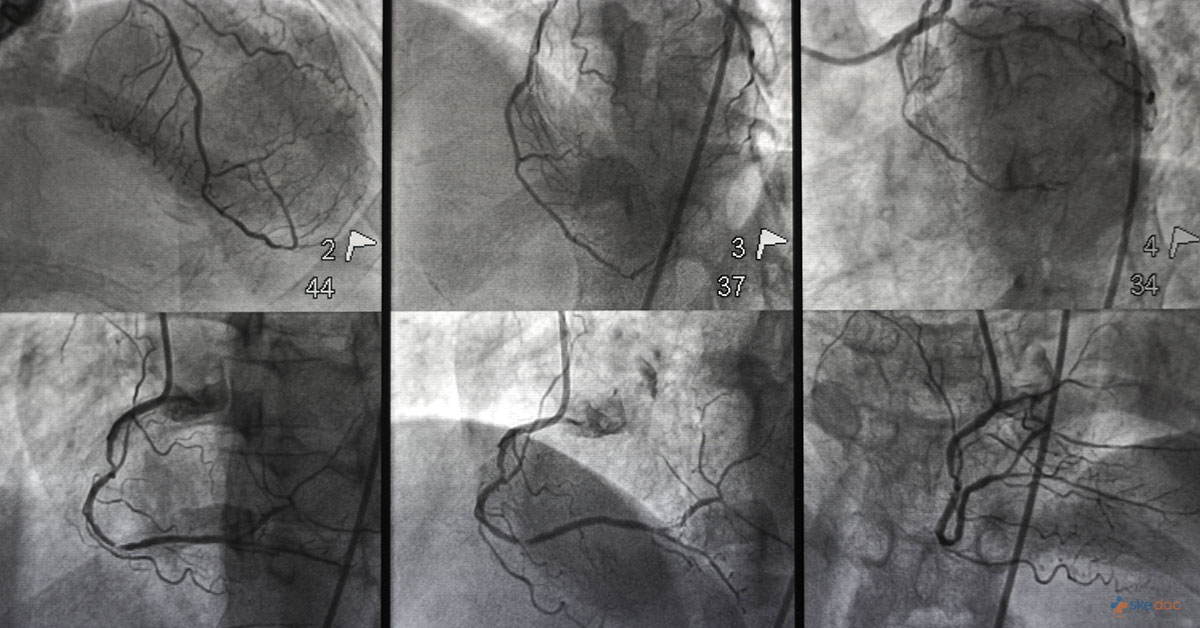Allergy
Blood Diseases
Bone & Joints
Brain
Cancer
Child Care
Cosmetic Surgery
Diabetes
Endocrinology
ENT
Eye
Gen Medicine
General Surgery
Heart
Kidney
Lifestyle
Liver & Digestive
Lung
Men’s Health
Mental health
Physiotherapy
Rheumatology
Skin and hair
Sleep Disorders
Spine
Transplant
Women Health
Thyroid
Vascular Surgery
Angiogram

What is an Angiogram?
An Angiogram is a procedure done using x-rays to visualize blood vessels. It provides images of blood vessels in different organs like the heart, brain, arm, and legs, and is useful for determining abnormalities in blood vessels.
Is an Angiogram procedure an elective or an emergency procedure?
An Angiogram is an elective procedure.
Indications
An Angiogram is used for both diagnostic and therapeutic purposes. The following are the reasons for performing an Angiogram:
- For examining blood flow in several organs such as the heart, brain, abdomen, pelvis, neck, chest, back, arms, and legs
- Evaluating blockages in the blood vessels
- Determining weakened blood vessels
- Identifying plaque deposits and blood clots in the blood vessels
- Evaluating cardiovascular abnormalities
- Diagnosing weakening or bulging of arterial walls
- Diagnosing atherosclerosis, pulmonary embolism, and vascular stenosis
- Diagnosing congenital deformities in the heart and blood vessels
- Diagnosing stroke
- Evaluating blood vessels before performing surgery
- Diagnosing the presence of any tumor and evaluating the blood vessel that feeds the tumor
An Angiogram is also used to plan treatments such as coronary bypass, stenting, and chemoembolization and to evaluate stents after placement.
Contraindications and risk factors
An Angiogram is not performed in the following cases:
- Significant history of an allergic reaction to contrast dye
- Pregnancy
- Presence of bleeding disorders
- Presence of kidney disorders
- Using blood-thinning medications
Investigations before the procedure
Blood tests will be performed before performing an Angiogram.
Preoperative advice
Before the Angiogram procedure:
- Nothing by mouth after midnight on the night before the procedure
- All current prescription medications to be disclosed and discussed with the healthcare provider
- Cessation of any blood-thinning medications or NSAIDs
- Cessation of smoking at least one day before the procedure
Intraoperative details
Anaesthesia: An Angiogram is performed under local anaesthesia.
Duration: The duration of the procedure usually is 15 to 20 minutes. The duration may extend depending upon the treatment.
Description of the procedure
An intravenous line is inserted. Heart rate, respiratory rate, and blood pressure are monitored during the procedure. After the application of local anaesthesia, a small cut is made on the skin to insert the catheter into an artery (usually the femoral artery in the groin). The catheter is inserted into the artery and advanced into the blood vessel that is to be examined.
A contrast dye is injected through the catheter. X-ray images are taken as the dye flows around the blood vessels. There may be a slight burning sensation when the dye is injected. After capturing the x-ray images, the catheter is slowly withdrawn and pressure is applied on the incision site for about 15 minutes to ensure there is no internal bleeding. A bandage is applied to the insertion site. In a few cases, Angio-Seal is used to close the insertion site.
Postoperative details
Postoperatively after Angiogram:
- Plenty of rest is advised
- Drink plenty of liquids
- The wound area should be clean and dry
- Observe the wound for any signs of infection like drainage from the wound, swelling, redness, pain, and fever
- Avoid showering, tub baths, or swimming until the incision site is cleaned completely
Role of diet/ Exercise/ Lifestyle changes
Aftercare instructions of Angiogram:
- Diet is as directed by the physician
- Avoid strenuous physical activities for a few days after the procedure
- Avoid heavy lifting
- Avoid alcohol consumption
- Avoid driving until suggested by the physician
Complications
Complications of an Angiogram are:
- Allergic reaction to contrast dye
- Bleeding
- Bruising and soreness at the insertion site
- Injury to an artery or vein
- Infection
- Injury to the heart walls
- Irregular heartbeat
- Acute renal failure
Prognosis
An Angiogram is a gold standard procedure for identifying many blood vessel abnormalities. The success rate of the Angiogram is 97% and the overall prognosis is good.
Indications for hospitalization if required
An Angiogram is performed on an outpatient basis and does not require any hospitalization.
Suggested clinical specialist/ Department to consult for the procedure
Interventional radiologist.
Was this article helpful?
YesNo




